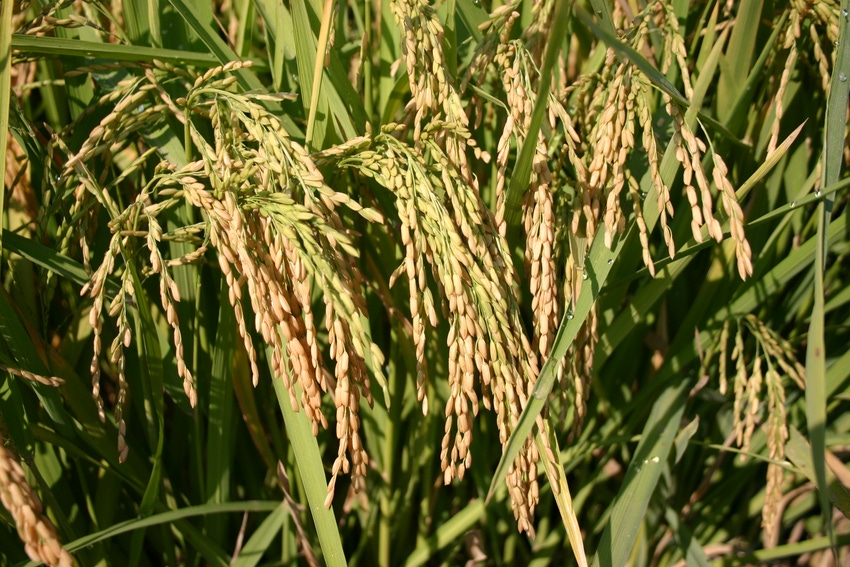
It hasn’t been the easiest early growing season for Delta crops. Dodging rains, producers have often scrambled to find days to plant. Problems have compounded as delays mounted.
Arkansas’ rice crop certainly hasn’t been spared, says Jarrod Hardke, state Extension rice agromist.
“Since the beginning of the season there has been a lot of concern about getting rice planted. That was primarily due to rains. A lot of what was planted early was held up by cool weather. Some of the pre-emerge herbicides, as they were activated, held things up some more.
“After it warmed up, the rains continued and were joined by winds. That impacted herbicide applications and that’s carried on until now --we’re just playing a lot of catch-up.
“The winds just wouldn’t let up. We had persistent, 20-mile-per-hour winds for around two weeks and planes had no business being in the air.”
In turn, all of that “affected the pre-flood fertilizer applications. We fell into a pattern of ‘it’s too wet to get it out on dry ground, which is our target.’ Then, producers had to decide on alternate fertilizer strategies for a number of acres because of the growth stage of crop. It was getting a bit beyond our optimum fertilize-and-go-to-flood term.”
In some cases, says Hardke, there was “a little room and we were able to wait for the ground to dry out. In others, we had to put fertilizer on mud, which isn’t the best practice but is better than putting in into water. Of course, there were also situations where we had to spoon-feed into the water.
“On days when it’s too windy to spray, fertilizer applications have continued to be made. Well, as a result, streaking has now become apparent in some fields and will cause some issues.”
However, “even though rice has been beat up early, most of it actually looks like it’s been cleaned up well. At this point, considering everything, rice I’ve seen up and down the state looks fantastic.”
Weed escapes/drift complaints
Hardke predicts producers will soon see weed escapes. “There are weed escapes coming. There’s no doubt they’re on the verge. Most of the crop is hitting mid-season -- some of the very earliest planted rice is heading -- and some weeds will be jumping out of the top.”
Asked about herbicide drift, Hardke says problems are once again surfacing.
“Over the last three weeks, there has have been very few days when (Arkansas weed specialists) Bob Scott, Tom Barber and I haven’t been talking about drift. ‘Where are you and what are you looking at?’ Typically, we’re in three different spots in the state looking at drift complaints.
“There’s been a lot of Newpath and glyphosate drift. Complaints about those are the most common. But with clean-up efforts -- and even needing tank mixtures for corn and soybeans -- there have been some interesting drift scenarios. The tank mixes cause interesting plant symptomology meaning some detective work is needed. What happened here? How far away did the drift come?”
Despite all this, only a small percentage of acres intended for rice weren’t planted. “I feel comfortable saying that because I know producers who were just finishing up planting (the week of June 16).”
What should those who planted so late be watching for?
“They need to pay close attention to the fields of folks who planted extremely early. They’ll likely experience the same problems with rice stink bugs and blackbirds, just later. (Pests) be waiting for the last thing that matures. If it turns into a rice stink bug year and we can’t get ahead of them, the late rice will be a sink that catches the pests. The same is true for areas with high blackbird populations.
“Disease is also an issue with late-planted rice – particularly with conventional varieties.”
Water weevils/acreage
What about rice water weevils?
“We’re seeing moderate to high levels of leaf scarring from weevils. We expect to have decent pressure on a lot of rice. The majority of rice goes in with an insecticide seed treatment. But in an elongated spring like we’ve experienced, while the treatment has likely helped with overall plant growth and health it’s probably run its course with respect to weevil protection. For rice that’s been in the ground 35 to 40 days before it went to flood, you can’t really depend on the insecticide efficacy.
“If you’re seeing a lot of scarring in a field, that means you’ll probably have to decide on a foliar application -- get the adults out before they lay eggs -- or, in a few weeks, you’ll have to drain the soil to cracking to kill off the pest all the way to the roots. That’s a real decision for many producers.”
The USDA has Arkansas at 1.5 million acres of rice. Do you think that’s accurate?
“I do. I’m sticking with 1.4 million or 1.5 million. Drive anywhere in the eastern side of the state and you’ll find rice.
“We’re also growing a higher amount of medium grain rice. Originally, I thought we’d have around 175,000 acres. Now, I think we’re easily over 200,000 acres of medium grain.
“Leading up to growing season, the reason I thought medium grain acreage would hover around 175,000 was because of seed supply. Well, obviously producers found the seed they needed.”
About the Author(s)
You May Also Like




